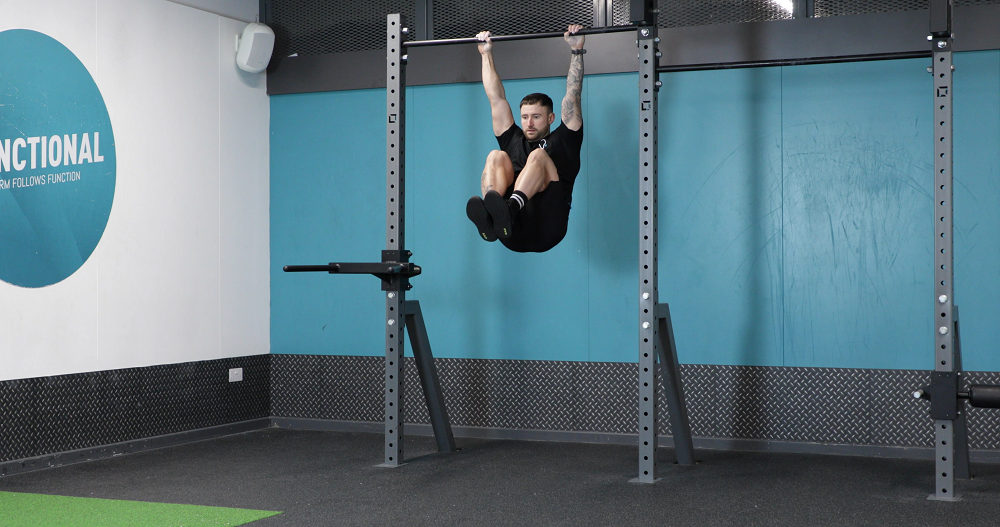Hanging Knee Raises
What Are Hanging Knee Raises?

Hanging knee raises, also known as hanging tucks, are an ab exercise that works the abdominal muscles (particularly the rectus abdominis and transverse abdominis at the front of the abs) and the hip flexors by challenging the person to bring their knees towards their chest while hanging from a bar. In addition to working the core, this exercise builds grip strength and shoulder stability.
Hanging knee raises are similar to hanging leg raises, but are performed with the knees bent at a 90 degree angle. Bending the knees shortens the lever (the length from the joint) and reduces the amount of strength and stability needed in the hip flexors, making this a more accessible variation for those who find straight leg raises too challenging.
Check out some other abs exercises: Toe touches, supermans
Most Commonly Asked Questions About Hanging Knee Raises
Hanging knee raises work the abdominal muscles, especially the transverse abdominis and the rectus abdominis, and the hip flexors. The hanging part of this exercise works the grip and the shoulders.
Leg raises can be a suitable alternative to hanging knee raises if you want to work the abs and hip flexors without hanging. For a progression, straight leg hanging leg raises are a more challenging version of hanging knee raises it has a longer lever arm, which means the muscles have to move more load.
Hanging knee raises build strength and stability in the major muscles of the abs and core, which translates into improved posture, reduced back pain, and increased strength for other movements including squats and overhead lifts.
Tips for Hanging Knee Raises
Reduce swinging by bracing the lats. To do this, adopt a dead hang position by allowing your shoulders to fully relax and then pull your shoulders slightly down while keeping your arms straight.
Brace your core by tensing your abs and pulling them down towards your pelvis.
Pause in the top position and lower your legs with control to build strength and challenge the muscles effectively.
How To Do Hanging Knee Raises
Take hold of a pull up bar using a pronated (overhand) grip, with hands shoulder width apart.
Allow your shoulder blades to drop so you are in a dead hang, and tuck your pelvis in towards your bottom ribs.
Bend your knees so they are at a 90 degree angle and your thighs are parallel with the floor.
Brace your lats and core to prevent your legs from swinging back behind your body.
Breathe out as you raise both knees up towards your chest, pause when you get as far as you can.
Breathe in as you slowly lower both legs back down to the starting position with knees bent at a 90 degree angle.
If you’re not sure if any of the above exercises are suitable for you, please consult your doctor before you start it. Need guidance on how to perform the exercise? Ask a personal trainer at your gym.